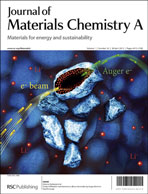An approach to prepare TiO2 nanomaterials with favorable morphologies and hierarchical structures is reported. It is seen that polyvinylpyrrolidone (PVP) and titanium butoxide (TBT) can combine together to form PVP@TBT complexes through a water molecule, changing from a 2-dimensional (2D) linear structure to a 3-dimensional (3D) network structure in the presence of a small amount water and/or by aging. The structure of the complexes significantly affects the morphologies of the resulting electrosprayed materials. With the change of the PVP@TBT complexes from a 2D to a 3D structure, the morphologies of the electrosprayed materials transform from core–shell spheres, to bowls, to ink-bottles, to rings, and to microfibers. Moreover, the electrosprayed materials can be converted to porous TiO2 hierarchical nanostructures with tunable specific surface area, pore size, and pore volume, through facile hydrothermal treatment. Our findings provide an effective strategy to fabricate hierarchical TiO2 nanomaterials that are suitable for TiO2-based applications. It is shown that the TiO2 materials with the morphologies of bowls, ink-bottles, and rings have higher photocatalytic activity due to the multi-scattering of light.

You have access to this article
 Please wait while we load your content...
Something went wrong. Try again?
Please wait while we load your content...
Something went wrong. Try again?


 Please wait while we load your content...
Please wait while we load your content...